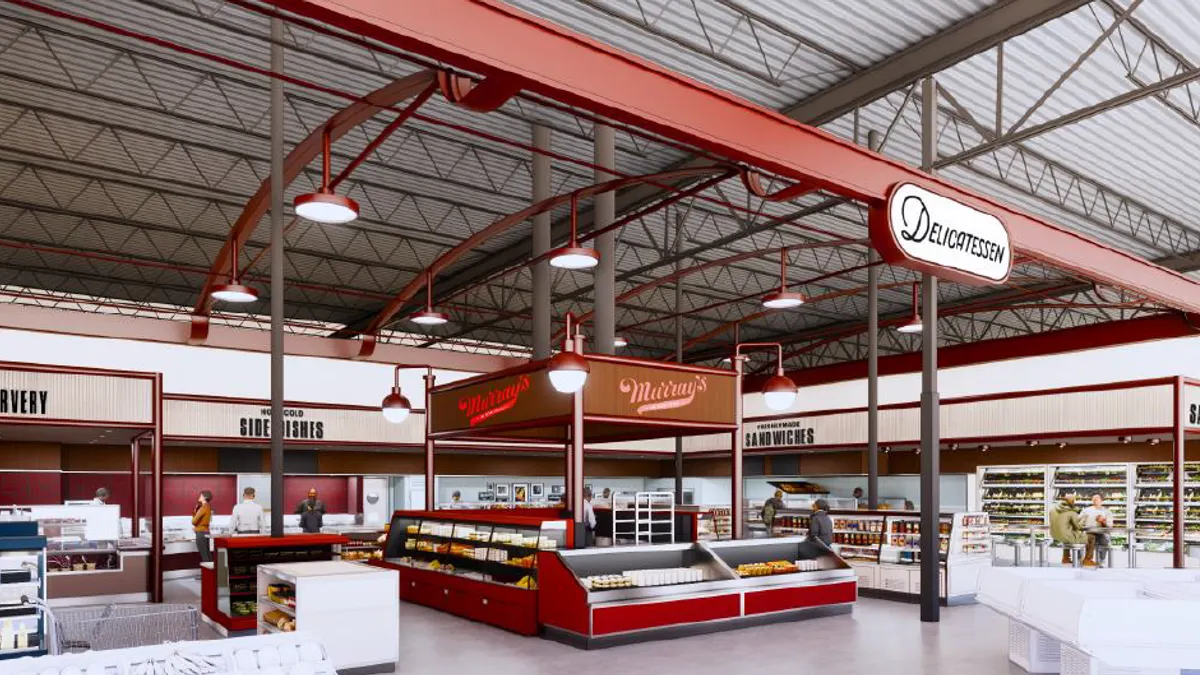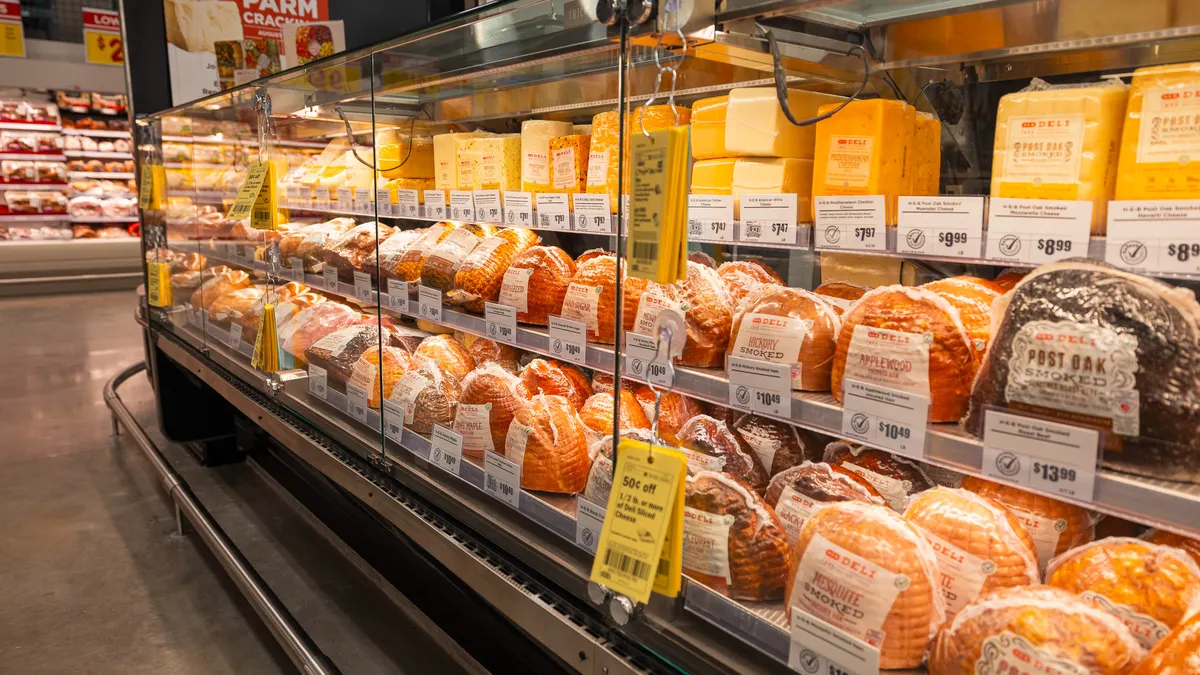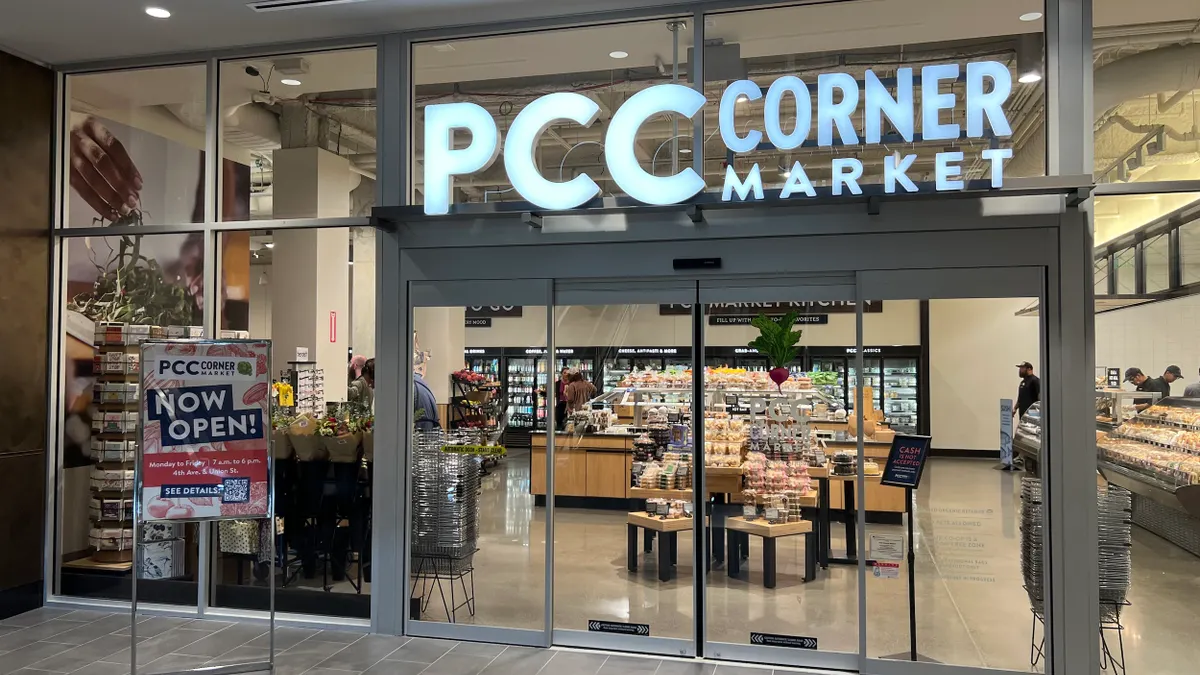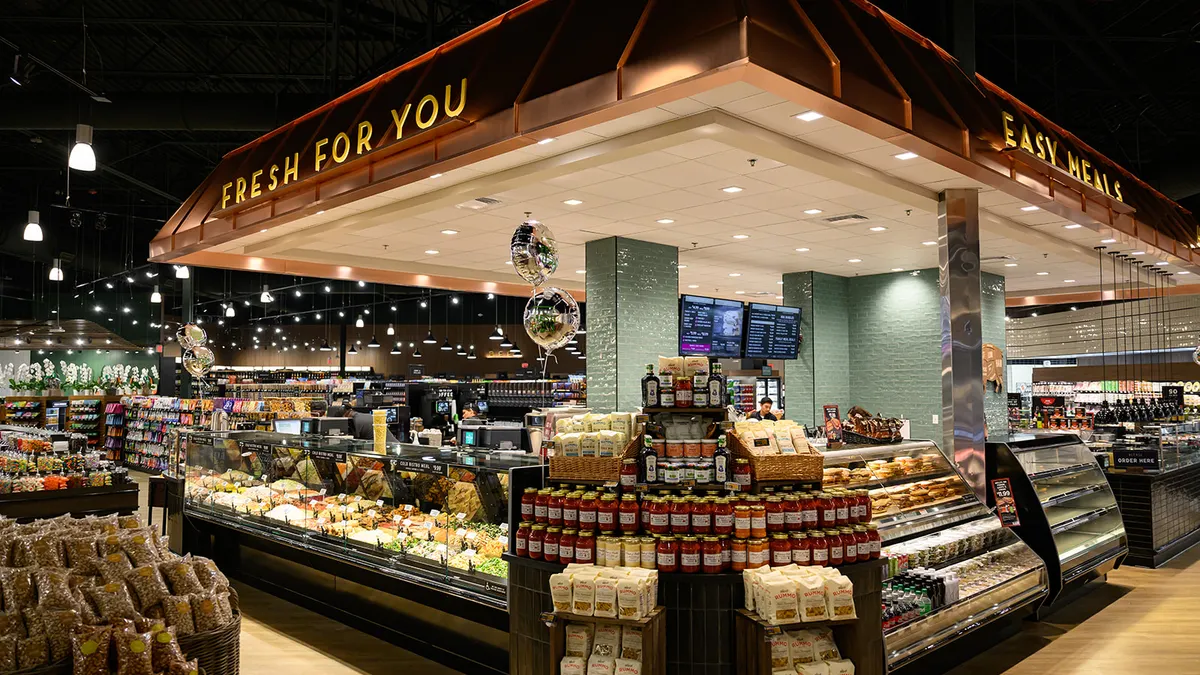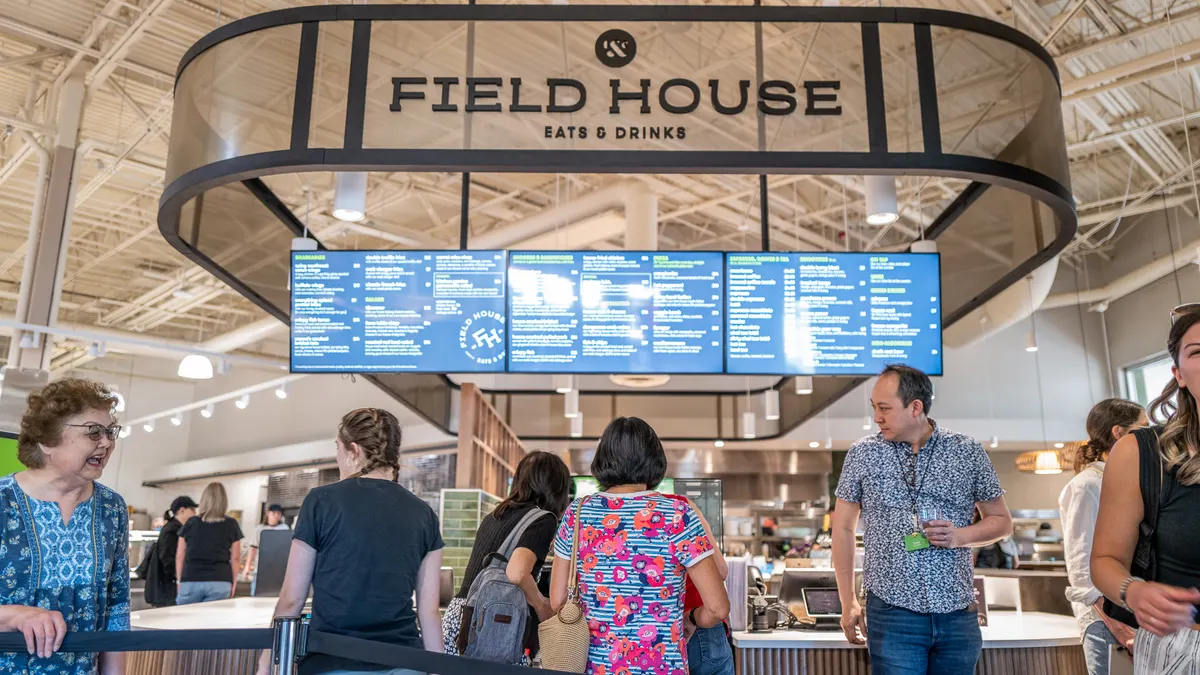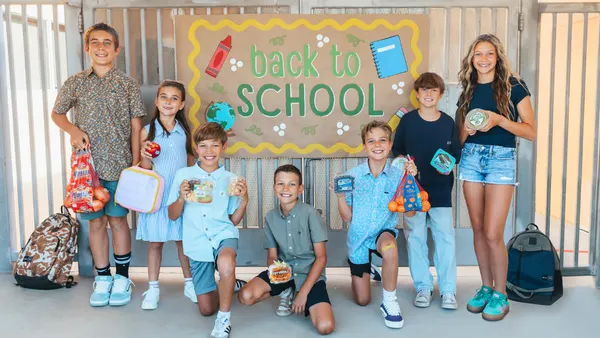This is the latest article in a series looking at prepared foods and meal solutions at grocery stores. You can read the additional articles here.
Convenience is at the top of consumers' grocery lists these days, making grab-and-go items a key opportunity and potential differentiator for retailers.
Sales in the deli department — a popular destination for grab-and-go — have soared recently, climbing from $15 billion in 2014 to $20 billion in 2018, according to Nielsen data. Some of the biggest drivers in the department include prepared items like salads, sandwiches, wings and meal kits.
On top of that, consumers prepare just 4.6 dinners at home each week, and most diners aren't interested in spending more than 30 minutes on prep time, Nielsen reports. Even among home cooks, more than half enjoy using semi-prepared ingredients on occasion to help get food on the table faster.
Altogether, this adds up to a major opportunity for grocers. But competing and succeeding in grab-and-go are two very different things, said Bob Goldin, co-founder and partner at Pentallect. As convenience evolves and becomes a bigger factor in shoppers' purchasing decisions, retailers are having to take a hard look at how they approach this growing category.
"Grocers who do grab-and-go items are all challenged by velocity per SKU, meaning they usually have lots and lots of items, but a lot of them don't move very fast. Volume is a killer for retailers in this segment," Goldin told Grocery Dive. "Shrink rates are extremely high and it kills profitability."
Finding the better-for-you sweet spot
Presentation is one of the most important elements of grab-and-go, Goldin added. A display of pre-packaged sushi, which has become a very popular choice, evokes all the colors and flavors of fresh seafood and vegetables, while an array of soups in transparent containers can add life to a display. Retailers and suppliers should capitalize with packaging that accentuates foods' sensory appeal, and in addition keep cases clean and well-stocked, Goldin said.
When it comes to location, Goldin observed retailers are sticking with the deli department and front-of-store rather than trying out new locations. If shoppers have to wander through multiple departments to locate grab-and-go items, they may be less inclined to make a purchase.
Shoppers that walk into Festival Foods' deli department can find ready-to-heat items that feature a protein, a starch and a vegetable for $5 to $6 per item. The category has "grown greatly," according to Kyle Kress, assistant deli director for the chain. The product is a complete meal option and gives Festival Foods room to play with different flavor combinations and cuisines.
Pot pie, meatloaf, family-sized pasta and roasted chickens are some of the most popular dishes the company offers, said Kress.
"In recent years, the convenience factor has played a big role in what our guests are looking for and as a result, we have expanded our grab-and-go, ready-to-eat type items," Kress wrote to Grocery Dive in an email. "We have had to adapt to the increase in demand for these items and will continue to do so to stay relevant."
Nielsen reports shoppers are looking for a bit of indulgence, with wings, lasagna and pizza remaining popular choices for to-go dining. But shoppers are increasingly looking for healthful and creative options. According to Nielsen data, salad dollar sales grew $193 million between November 2017 and November 2018 — up 49% from the prior-year period — while dollar sales of smoothies increased 32% during the same period. Sales of what Nielsen calls "innovative" plant-based foods, including veggie noodles and plant-based yogurt, grew 18% over the year-long period.
"More and more shoppers are paying attention to the type of foods and ingredients they are purchasing," said James Schwedhelm, deli coordinator at Oliver's Market, which operates four stores in California's Sonoma County. "They’re looking for sustainably-raised products and organic ingredients. Locally sourced products are also important (in grab-and-go)."
Oliver's offers grab-and-go sandwiches, salads and soups in its deli department. It also has two lines of heat-and-eat meals: Oliver's Home Style meals, which include traditional favorites, and Fit Friendly Foods, which covers a range of entrees, soups and sides that contain less than 400 calories.
At Seattle-based PCC Community Markets, shoppers are always looking for something new in grab-and-go, a spokesperson told Grocery Dive. Global foods are a big hit, while protein alternatives like jackfruit are starting to make serious inroads. Like Oliver's Market, PCC reports an increase in demand for sustainable and ethically sourced offerings.
Whole Foods maintains an extensive cold case in the deli section that offers prepared foods including sandwiches, wraps and desserts. Earlier this year, the Amazon-owned chain revealed its latest brick-and-mortar store concept in New York, Whole Foods Daily Shop, offering a variety of grab-and-go items including breakfast bowls, oatmeal, half chickens, paninis, salads and soups. The location is also focused on local favorites like Dough Doughnuts.
Volume is a killer for retailers in this segment. Shrink rates are extremely high and it kills profitability."

Bob Goldin
Co-founder and partner, Pentallect
Solving the fulfillment equation
As consumers become more selective, grocers may find it challenging to respond to evolving tastes and efficiently lay out the right assortment. Numerous retailers utilize off-site prep sites, and some have invested in their own dedicated facilities.
Ahold Delhaize recently announced it's opening a fresh processing facility and culinary innovation center in Rhode Island that will be used to prepare fresh food items including cut fruits and vegetables, salads, sandwiches, wraps and other fresh food items. It will initially serve the company's Hannaford and Stop & Shop banners.
A standalone prep facility provides retailers with more flexibility when it comes to figuring out which ingredients and flavors to offer. Unlike other segments, grab-and-go items are less promotionally driven and more need-based, Goldin points out. In lieu of standard promotional tactics like buy-one-get-one and limited-time-offer, he predicts retailers will dig deeper into targeting consumers based on demographics and purchasing patterns.
Effective data gathering can help retailers pinpoint tastes and preferences at a more localized level. A store located next to a busy business district may move more sandwiches, wraps and handheld items that are easy to eat on a quick lunch break, while a location near a residential area may sell more ready-to-eat meal ingredients like cooked chicken or pasta salad.
And with the continued rise of e-commerce offerings, a standalone kitchen facility provides an opportunity to pivot into a fulfillment center for online orders of prepared food items. Lowes Foods and Wegmans have both launched prepared foods delivery in recent months.
A few retailers beyond the grocery segment are also throwing their hats in the grab-and-go ring. Target is experimenting with more grab-and-go offerings in Minneapolis, offering self-service kiosks so that shoppers can check out quickly. The new prepared foods section, called Snack Bar, also offers Pizza Hut, ICEEs, salads, popcorn and other quick snacks.
Pumping up grab-and-go foods in the same places where shoppers buy their groceries allows retailers to blunt the impact of restaurants. But some eateries are fighting back with their own prepared foods. Newk's Eatery, which operates restaurants in 13 states, has provided grab-and-go options since it launched in 2004. The company saw an opportunity to serve even more on-the-go customers and last year launched its Express Market concept, which offers take-home meals and sides along with meal components like broiled shrimp, pre-grilled salmon fillets and petite tenderloin steak.
"Grocers have done a great job. It's exactly why you see us and other brands like us adding choices in our grab-and-go area from pre-made to heat-and-eat," Chris Cheek, chief development officer at Newk's Eatery told Grocery Dive. "The success of grab-and-go is really driven by store operators. It's a function of how attractive grab-and-go looks because people eat with their eyes."
On top of increasing its take-home meal offerings, Newk's is experimenting with different grab-and-go options like snack boxes with cheese and fruit and items that cater to shoppers with specific dietary restrictions.
Along with private label, grab-and-go foods give grocers one of the few opportunities to stand out against competitors, said Goldin. Considering this, retailers should look at these items as merchandising vehicles, if not sales drivers, for a fresh, flavorful store experience.
"You are not going to differentiate on traditional grocery items, frozen foods, or even health and beauty products," Goldin said. "(Grab-and-go) can be very profitable ... if you can manage it well, and I think it's high-margin relative to selling packaged goods."






